High-temperature shrubs, abundantly seated with lush inflorescences, are widely used in the design of landscaped areas, landscaping the garden and park areas of many countries of the world. But you can grow shrub and independently, in my garden. It is enough to know the features of planting, care and reproduction of this, unusual for our latitudes, culture. And so that the shrub easily stood harsh snowy winter, it is important to choose the appropriate winter-hardy rhododendron variety. All nuances of agrotechnology growing of this exotic culture and practical recommendations of gardeners - read in this article. A selection of photos and video lessons will complement the overall idea of \u200b\u200bthe process of growing Rhododendron in the open soil.
Rhododendron, Botanical Description
- Rhododendron is a typical representative of the heather family, uniting a variety of types of shrubs, trees and, even indoor plants.
- Garden Rhododendron is represented by both short grades whose bushes are literally shake on the ground and gigantic lush shrubs reaching a height of up to 3-7 m.

- Evergreen and deciduous varieties of wood rhododendrons are growing in culture.
- This shrub is common in the temperate latitudes of the Northern and South Hemispheres. The agricultural area in Russia varies depending on the type of plant: from the warm Crimea to severe Siberia and the Far East.
- In natural, natural conditions, rhododendrons can grow by single cultures or whole shrub thickets. They are found near forests, swamps, on mountain slopes, in the tundra and forest-steppes.
- Your interesting name, the plant received due to spectacular appearance during flowering. Rhododendron, translated from the Greek, denotes "Rose - Tree". Blooming shrub denstly bored with large flowers resembling roses.

- Flowers Rhododendron collected in lush inflorescences brush or shield, with wedges of yellow, pink, purple and red shades. The size of a single flower can be from 5 to 25 cm in diameter, the shape resembles a disproportionate bell with long and elegant stamens. By combining flowers in thick inflorescences, the branch looks like a real bouquet. Blossom starts early in spring and continues, in some species, to the coldests. The fruit is represented by a multiferous box.
- Easy There are smooth or pubescent. But the leaves of Rhododendrons are very diverse. Depending on the type or variety, they can be perennial or annual, with a cushion and without it, ovoid or elongated form.
- Root system The culture is urine, compact, is located close to the surface of the Earth. This property is important to consider when leaving for rhododendron.
Rhododendron, varieties and species diversity
The species diversity of rhododendrons can be divided into 3 groups:
- Evergreen
Such shrubs are not discharged by foliage, even in winter. Leaves, as a rule, dark green shades, and flowers are large, different shades. We prefer light half and a well-drained, saturated peat, soil.
- Semiistral
The intermediate group of plants, represented by low shrubs, perfectly wintering under the snow cover. Most of the leaves in this period falls out, leaving the muve only on the tips of the branches.
- Falls
The usual, for the middle strip of the country, shrubs drop the leaves during the occurrence of cold weather. The plant is perfectly adapted to the winter climate.
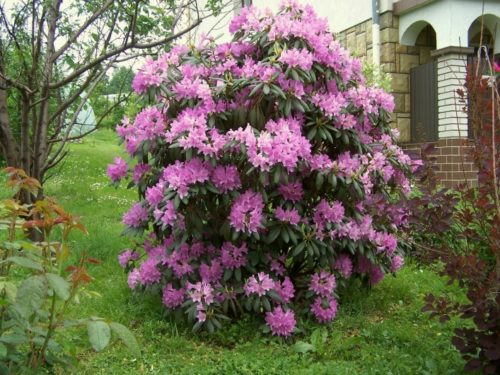
A huge variety of rhododendron species allows you to choose a specific variety, the most adapted to one or another climate conditions and the growing environment. Consider the most famous of them.
Rhododendron Daursky
Evergreen woody shrub, with awarded up, branches, reaches a height of 2-4 m. Small leaves, with a glossy surface. Flowers - large size (4 cm diameter) and purple-purple shades. This species blooms abundantly within 3-4 weeks. Perhaps repeated bloom in the fall. The view easily multiplies with cuttings, has a high winter hardiness.
Rhododendron Adamsa
Winter-hardy, evergreen and low shrub is characterized by widely spreadable branches. Green matte leaves have an extended shape. Flowers are small, but due to the lush inflorescences collected by 10-15 pieces, look very beautiful and effectively.
Rhododendron Japanese
Motherland is Japan. A leafy branched shrub, reaches no more than 2 meters in height. Rhododendron leaves are green, slightly pubescent; Autumn acquire colorful orange shades. Large (up to 8 cm in diameter) Bell flowers are fragrant with a pleasant aroma. Color range of inflorescences - carmine-red shades. Rhododendron Japanese is one of the most attractive and magnificent representatives of this kind.
Rhododendron Caucasian
Right from the Caucasus, the view refers to evergreen, low shrubs, with raging, on earth, branches. Leaves dark green, oblong shape. Flowers are bell and fragrant, different color palette, depending on the variety. It can be a pink, yellow or purple-white chimney. And a variety of color splashes (green, red) allow flowers to look very original and unusual.
Rhododendron pink
A leafy decorative shrub that achieves height from 1.5 to 3 m. In the homeland (in North America) can grow to 5m. Compact shrub shape, with reprehensive branches. It blooms abundantly in May month, bright pink fragrant inflorescences.
Rhododendron hybrid
It is an extensive group of hybrid rhododendron. The most popular cultural varieties of this type of hybrids are:
- grade "Alfred"
Evergreen and compact shrub 1-2 m high, with large (up to 6 cm) flowers collected into dense and fluffy inflorescences. Hanks - pink color, with gas splashes.
- Grade "Blue Peter"
Average shrub (1.5-2 m), with a widely spreaded crown, is distinguished, unusual for the species, colors of the whites. A gentle blue shade of a corrugated flower, with a bright pink speck on the top petal, attracts attention to its beauty and expressiveness.
- sort "Roses Marie"
Shrub reaches a height of not more than 1.5 m, as much as it is approximately the crown girth. The leaves have oblong, with a wax chain. Flowers, gentle pink shades, are collected in inflorescences of 10-15 pieces.
Winter-hardy Rhododendron varieties
It is mistaken to consider Rhododendrons with a thermal-loving exotic culture that is not capable of growing in cold climates. Currently, a mass of frost-resistant varieties of rhododendrons, perfectly adapted to cold and harsh winters. Many of them are able to winter without additional shelter and withstand very low (up to -30 ° C) temperature.
Excellent proven such winter-hardy varieties:
- "Grandiflower" (compact bush with purple inflorescences),
- "Nova Domble" (distinguished by bright, ruby-colored, inflorescences),
- "Karakutakus" (average radiped bush with burgundy-pink corrugated inflorescences),
- "Album Novum" (spherical bush with gentle pink flowers),
- "Elite" (spreaded bustard with inflorescences, contrasting shades, withstands -35 ° C),
- "Hague" (small shrub, with wrenches, pink color),
- "Helsinki University" (named after Helsinki University, withstand -40 ° C),
- "Daughter of Thjjola" (sprawling low-spirited bush with purple flowers).
Where to buy Rhododendron
- To acquire a specific Rhododendron variety, it is best to contact specialized nurseries (for example, a botanical garden) or shops. It is there that, you can get high-quality and necessary seating. In addition, experienced flowers willingly share the secrets and the peculiarities of growing this culture.
- In the event of the acquisition of Rhododendron saplings in the natural markets, there are risks of buying a non-relevant variety or not adapted to cold climatic conditions.
Rhododendron reproduction
You can grow a culture on your site yourself, knowing the methods of its reproduction. Rhododendron, like most bush, breeds with the help of seeds, cuttings, melts, vaccinations and division of the bush.
What method is most effective and easy to execute?
Seed method of breeding Rhododendron
To multiply the culture with the help of seeds - the lesson is long and not simple. As a rule, this method is practiced by breeders to remove new varieties. Flower-lovers will also be able to grow rhododendron from seeds, observing a certain technology.
- In early spring, the seeds are sown in containers with a peat-earthen fertile mixture (with the addition of sand), covered with glass and placed on the illuminated place.
- Sowing superficial, do not close the seeds deep into the soil.
- Seeds can be in advance to soak in water and withstand the day, which will provide a greater percentage of germination.
- The ground in the container must be constantly moisturized. It is better to spray water to avoid moisture stagnation or soil moistening.
- Peaceking, as well as the mooring of the soil, can lead to the death of seedlings.
- Lined into the container and covered with glass or film, seeds, regularly (daily) ventilate. During the ventilation, you need to wipe the glass, removing the condensate appeared.
- Container lighting should be at least 12 hours per day. If daylight is not enough, luminescent lamps use.
- The first shoots appear in 2.5-3 weeks. After a month, the graceful seedlings can be planted (diving at the same time) in separate pots. At the same time, the temperature in the room is reduced to 10-12 ° C.
- In the summer, it is better to carry pots into the street, putting them in a half.
- In the open soil seedlings planted only the next spring.
- Rhododendron blooms, grown from seeds, in about 4-5 years.
Rhododendron breeding breeding
- Prepare cuttings, cutting half-hearted shoots (better than the top), about 8-10 cm long. The lower cut is made by oblique.
- Cutting down the lower leaves from the shoots, it is recommended to withstand the cuttings in the solution of the root growth stimulator about 12-15 hours.
- Cherenks are placed in the soil-peat mixture (like during seeds) at an angle of about 30º, seal the ground and cover with glass or plastic banks. Maintain the temperature in the room about 20-25ºС.
- After their primary rooting (from 2 to 5 months, depending on the variety), sear the cuttings into separate tanks for reducing and hardening, reducing the room temperature to 10 ° C.
- In the spring, planting cuttings into the soil along with the container and grow them, therefore, a few more years.
- The rooted developing cuttings, after 2-3 years, plant on a permanent place.
Rhododendron reproduction
This type of reproduction is recognized by gardeners most convenient and simple, especially for decisions of Rhododendron.
- In order for the "pin" shoot to the ground, in the spring, the lowest branch of the shrub is chosen, the small groove (up to 15 cm depth) is torn under it) and the selected process is laid there.
- For better rooting, the tanks are pinpled in the middle with a metal bracket (rigid wire), and the ground with a groove with a groove is sprinkled. The tip of the escape is not sprinkled, but are tied up to a wooden peg.
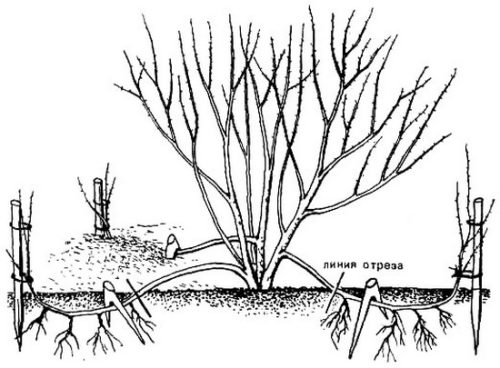
- Permanent irrigation, constantly maintaining the wet microclimate.
- When in the fall or in the spring, the chain is completely rooted, it is possible to separate it from the uterine shrub and plant it on a new place.
- Leaving dragged to winter, it is better to provide them with a shelter with dry leaves or fabrics.
In addition to the described methods, the breeding of Rhododendron is also the division of the bush with part of the root system. The division procedure can be carried out early in spring or autumn.
Reproduction with vaccinations - a complex process that requires certain skills and experience. It is used for slow-growing species Rhododendron.
Rhododendron, landing features
Landing time
- You can plant a plant in spring and autumn, with the exception of the flowering period and 10-15 days after it.
- Most often, gardeners are putting planting Rhododendron in the spring (in order to avoid the frozen of seedlings).
Place landing
- You need to give preference to a half-directed windless place, better from the northern side of the garden.
- Shrub does not like straight intense sun rays or too shaded place.
- Do not land the culture and in the places of moisture.
- It is also important to pay attention to the "neighbors" Rhododendron: trees and shrubs with a surface root system will become competitors on the site, which can affect the lack of moisture and nutrients.
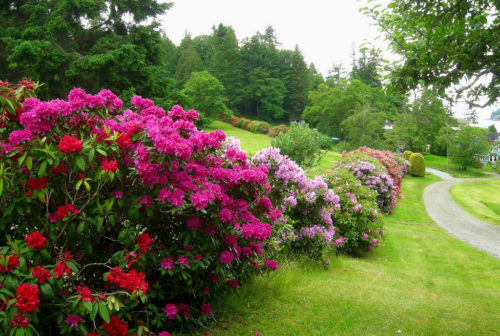
The soil
- The soil must be acidic, loose, fertile and draned.
- Rhododendrons poorly carry alkaline or neutral environment.
- Heavy clay substrates inhibit plant growth. But the presence of peat in the soil will ensure the optimal development of the shrub.
Agrotechnology landing
- Given the surface position of the numerous root of Rhododendron, it is necessary to dug a shallow (about 40 cm), but wide (up to 60 cm) pit.
- The pit must double the actual size of a seedling.
- At the bottom of the pit, pour a drainage layer (15 -20 cm) from pebbles, rubble or slate pieces, then sprinkle a sulfink with peat (1: 2).
- Dummy soil, the sapling is vertically placed in the well. Put it asleep to the root neck and compact the soil.
It is important to locate the root neck at the level of the soil! Otherwise, the plant will wake and may die!
- When landing, organic and mineral fertilizers are added to the meader.
- Abundantly watered the planted seedling with water.
- Additional mulching (by 5-7 cm) of the priority circle will provide moisture delay. The mulch uses foliage, moss, cheu or peat.
- In the case of planting rhododendron with bud or inflorescences, it is better to delete them by sending all the efforts of the plant for a successful rooting of the shrub.
- Sutting off the culture with groups, leave the interval between shrubs, depending on the future sizes of the type (from 0.5 to 2 m) and the target destination of culture. For example, if the cultivation of Rhododendron provides a "alive hedge", they are planted significantly more often (30-40 cm).
- In the first days after landing, the shrub must be covered from direct sunlight and often spray with water.
The surface root rhododendron system makes it easy to transplant young shrubs, not traumating the roots and quickly attaching in a new place.
Rhododendron, plant care rules
Growing Rhododendrons in his garden, it is necessary to know how to properly care for the plant so that it is as long as possible with its riot blossom and beauty.
Watering
- Rhododendron is a moisture-loving plant, but, along with this, does not transfer excessive convergence. Although the lack of moisture is adversely affected by culture.
- The need for watering is visually noticeable at the state of the leaf of the shrub: if they become less brilliant, the wishes and wadding - Rhododendron needs irrigation. In addition, the lack of moisture significantly reduces the flowering period of Rhododendron.
- It has favorably affects a shrub watering with acidic soft and estimated water. To prepare such water, it is necessary to put a few grieving peat into water in the water.
- In the event of arid summer and autumn, it is carried out an additional underground watering in late autumn, before the onset of frosts.
Loosening and mulching
- Given the surface running roots from Rhododendrons, it is necessary to very carefully hold a weed from weeds and loosen the soil near the shrub.
- Deep loosening or repack area can damage roots, after which the plant will be difficult to recover.
- To preserve moisture, the soil around the trunk should be closed. The mulch use materials that increase the acidity of the soil.
Feeding and making fertilizers
- For rhododendron, fertilizers that preserve the acidic soil environment are suitable: superphosphate, nitric acid and sulfurish potassium, sulfate magnesium, ammonium or calcium.
- Fertilizers are brought at low concentrations in liquid form.
- An aqueous solution is used from organic feeding (1:15) by half a reworked cow manure. The solution insists for several days. Pork and horse manure reduce soil acidity, so their use is not recommended.
- Feed rhododendrons 2-3 times per season, in the period from early spring and before the end of the growing season (in August).
Trimming
- If the rhododendron bush is uniform and correct form, it does not need trimming.
- If the bush is too thick and screamed, there are sticking, dry, damaged branches - they are cut into early spring. Thick sections (2-4 cm) are treated with garden wrair or paint, in order to avoid infection.
- Gardeners recommend trimming the swords of the Buds to provide the same abundant bloom and next season.
Shelter for winter
- Most varieties of Rhododendron grown in cold and harsh winter need winter shelter. Young seedlings are necessarily prepared for wintering.
- Cover the bush in the late autumn, wrapped it with its rubberoid, burlap or film. It is also practiced by the shelter by fir branches or foliage (in the case of a low rhododendron).
- In the spring, remove the shelter when stable warm weather will be established (+10 s).
Fighting pests and diseases
- On the shrub can lay mucus or snails, which are simply collecting manually.
- If the plants started bugs, shields, a web tick, a torment worm or rhododendron flies - without processing with a special fungicide can not do. In such cases, "Tiram", "Carbofos", "TMTD", "Diazine" is used.
- Under the defeat of Rhododendron, fungal diseases (rust, spottedness, chlorosis), attention should be paid to watering mode and ensuring the aeration of the roots of the plant. Chlorosis is exterminated with iron chelate, drunk branches completely removed, and in order to prevent and treat the entire bush in spring or autumn to be treated with burgundy liquid.
Application Rhododendron
- The main purpose of the shrub is decorative. Therefore, landscape designers have long chosen this unusually beautiful plant and use it for decorating and gardening gardens, parks, receiving sites.
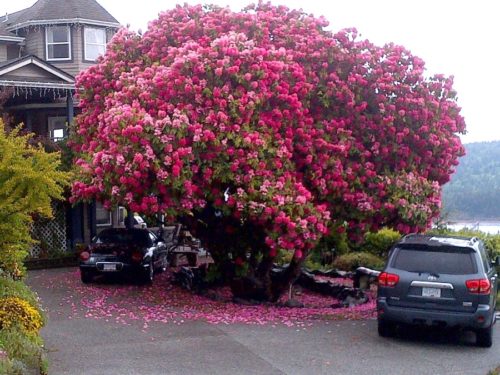
- Shrubs are spectacularly looking, both in single landings (as a central accent composition) and in groups (creating a living hedge or flower frame). A successful combination for a blooming rhododendron will be any low-spirited coniferous plants, ferns, heather.
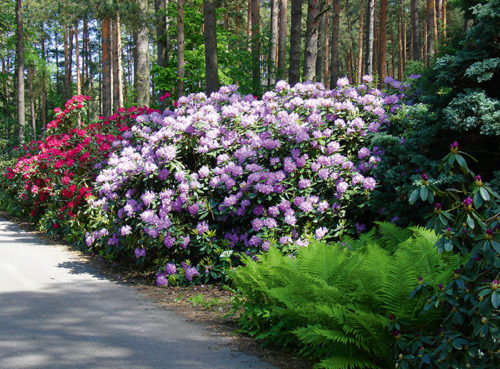
- Some Rhododendron varieties, thanks to their healing properties, are used in folk medicine. Medicine substances containing in the plant: Arbutin, Andromedotoxin, Rhododendrin, ascorbic acid have soothing, painful, antipyretic and bactericidal actions. Given that many Rhododendron varieties are poisonous, in no case can plant without consulting a doctor.
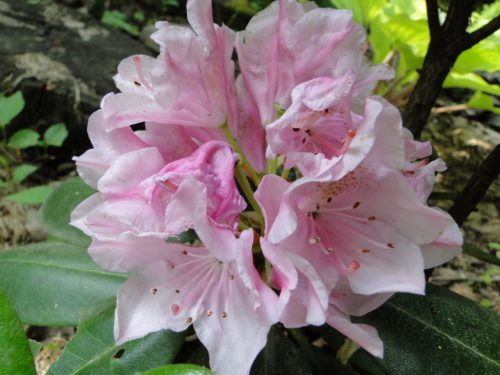
The main advantages of the plant are long and decorative flowering. The wealth of paints of lush inflorescences, abundantly located on the shrub, is impressive with sophistication and beauty. Observing, uncomplicated relaxation requirements for rhododendron, you can grow this wonderful plant and on its own site.
Rhododendron, photo
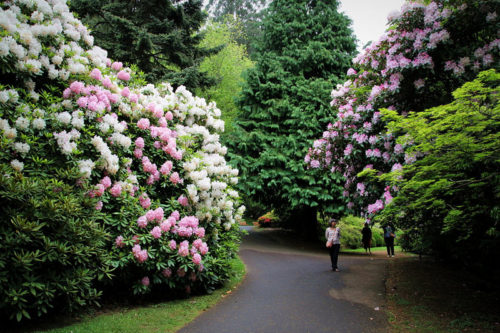

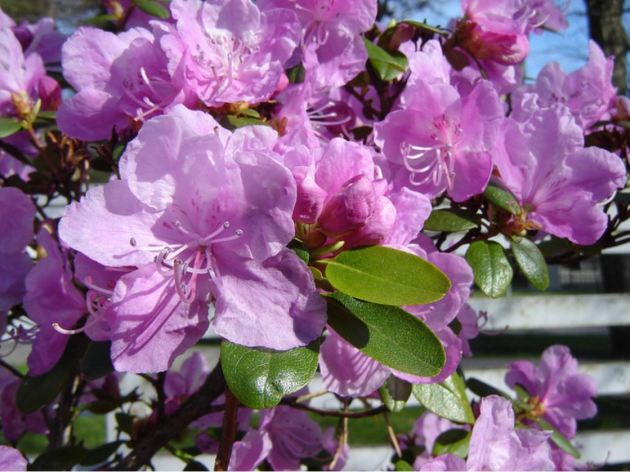
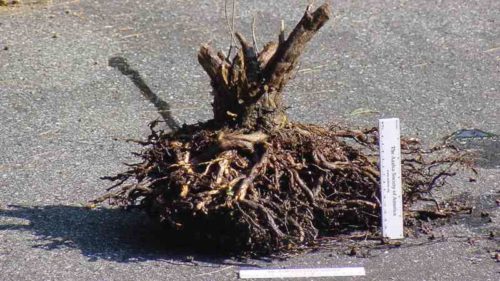
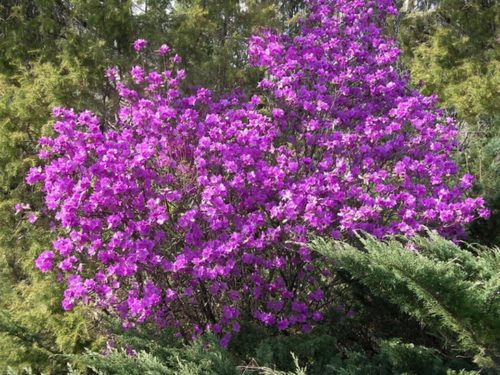

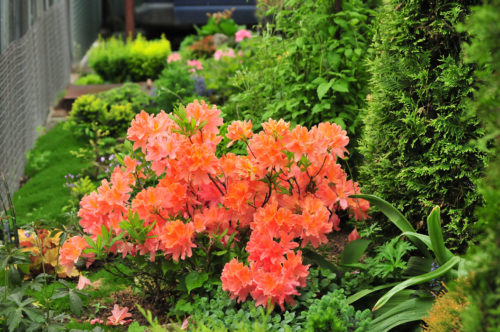
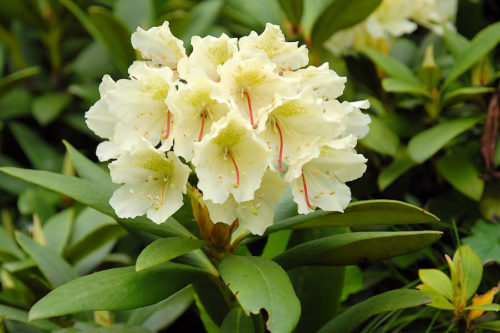
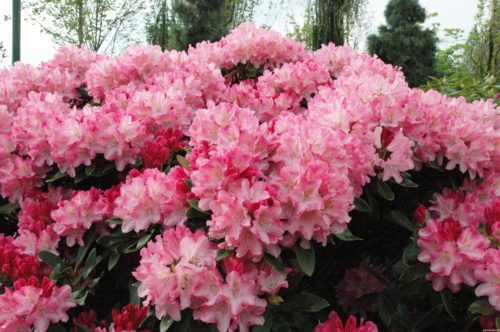

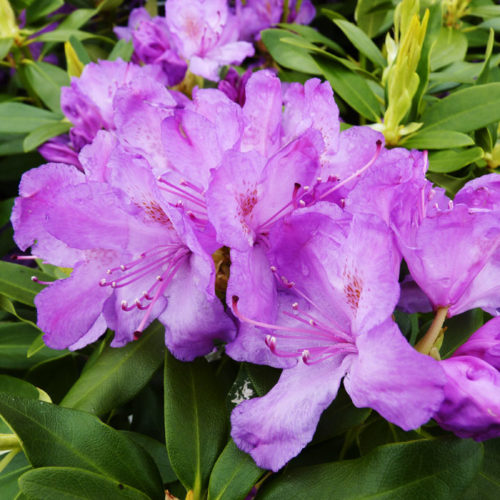
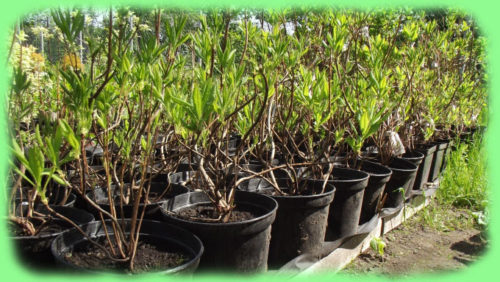
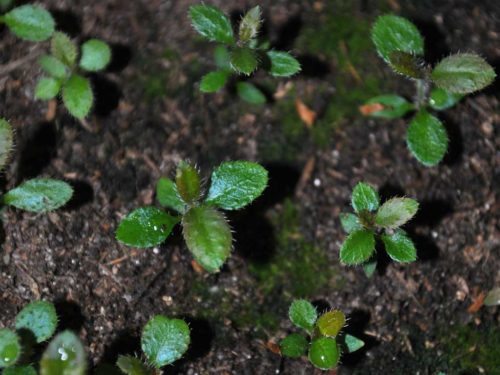
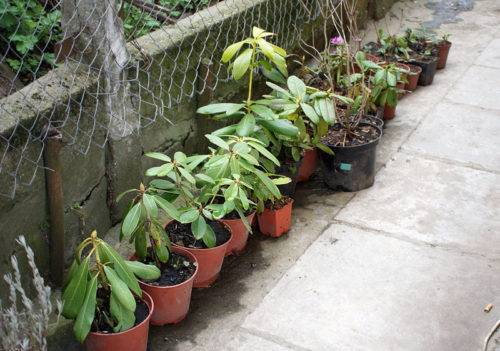
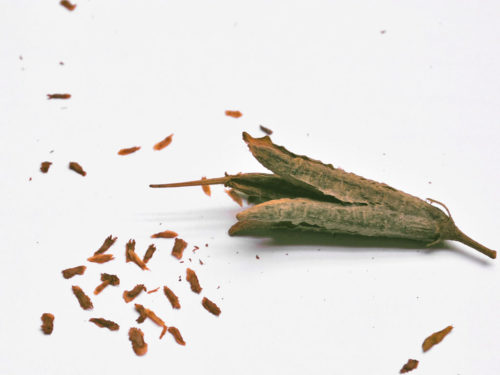
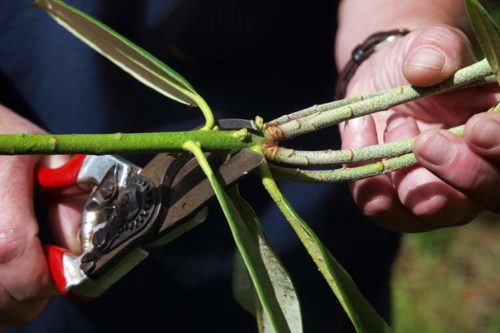
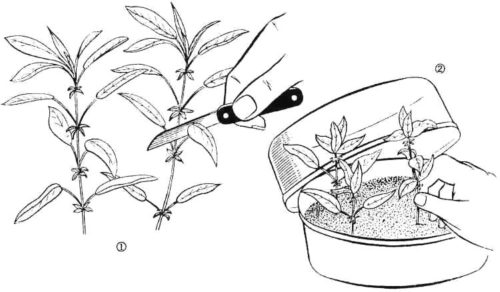
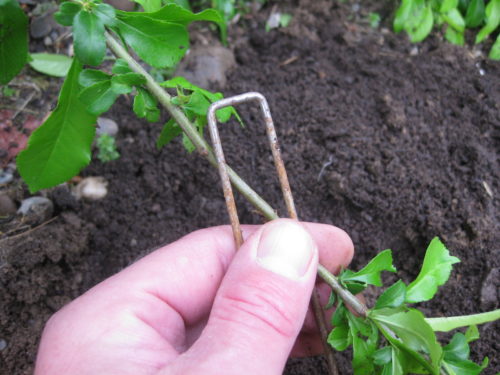
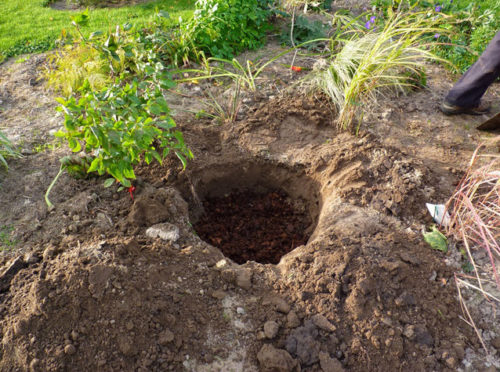

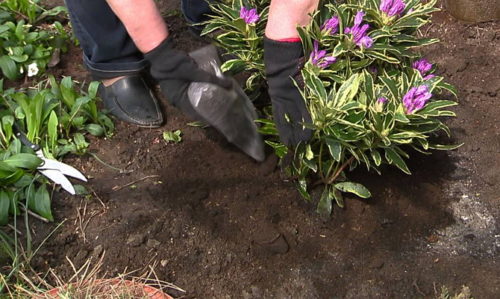
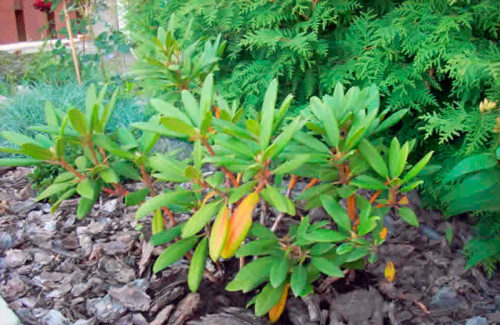
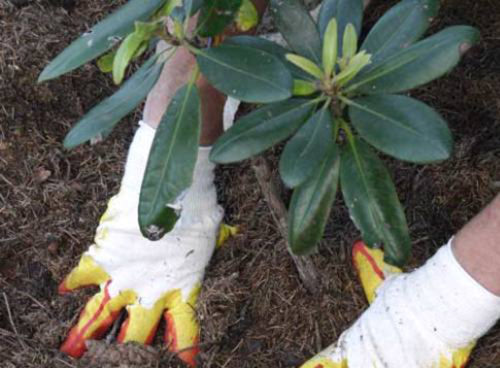
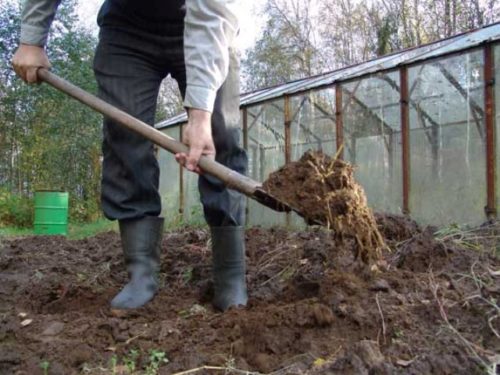
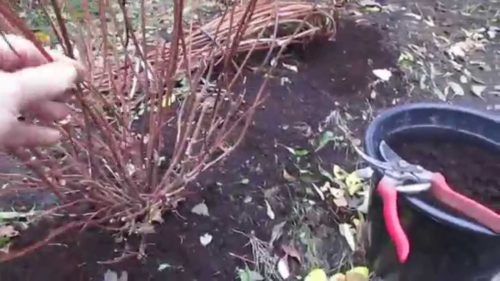
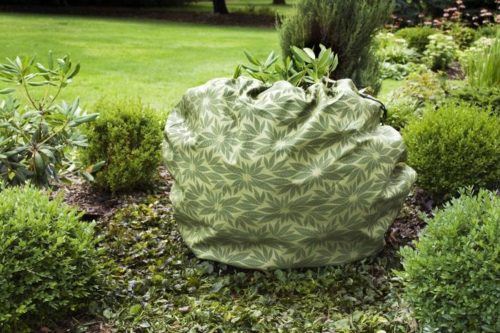
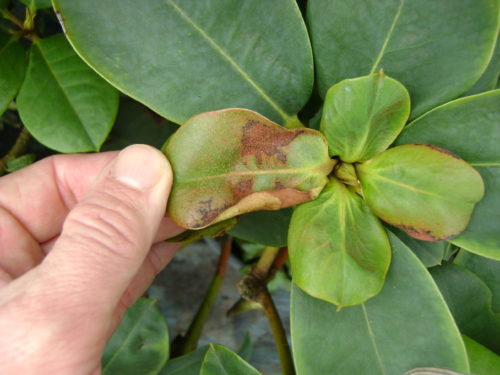
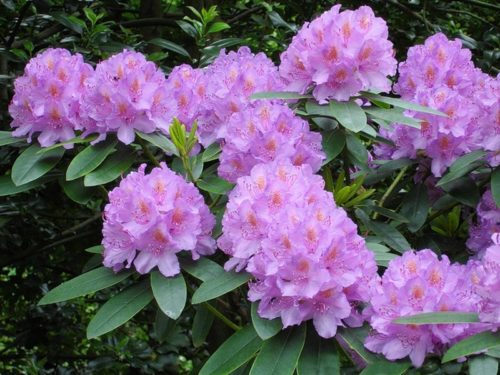
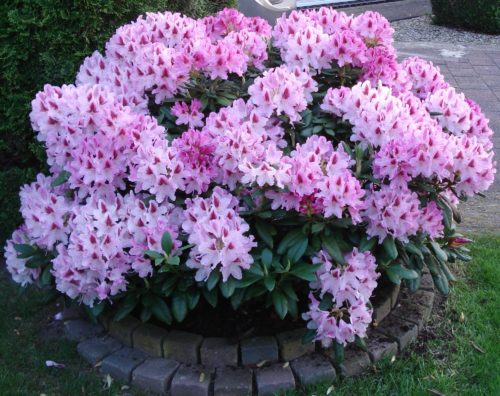
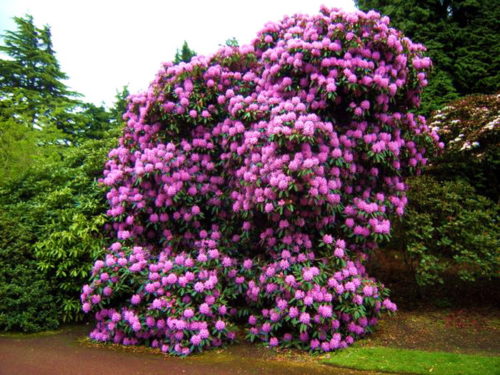
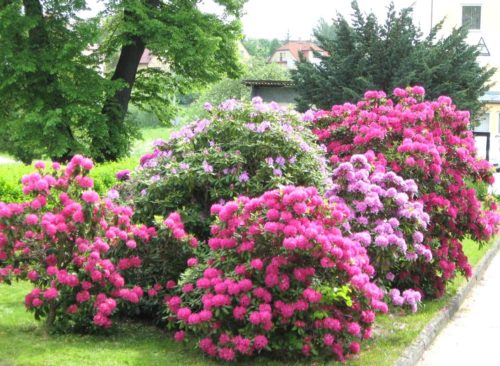

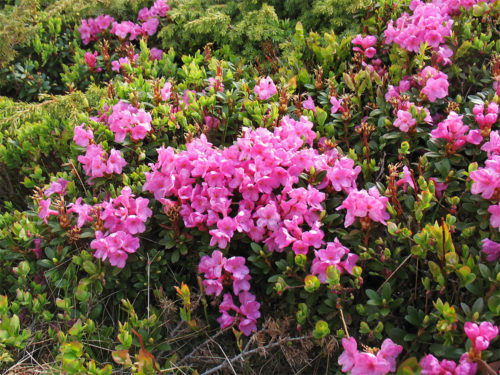
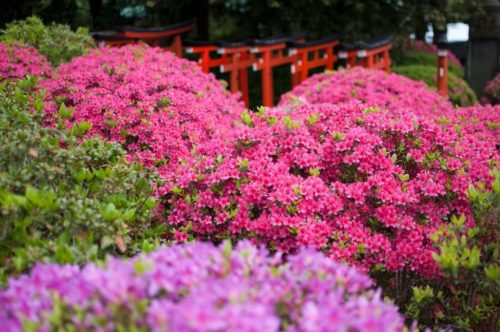
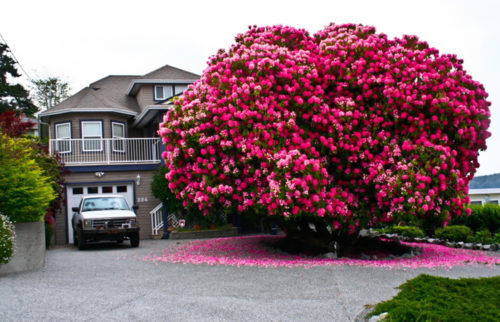
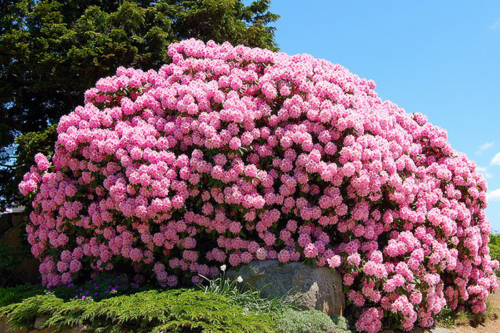
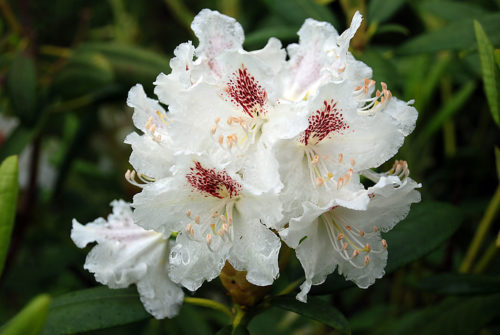

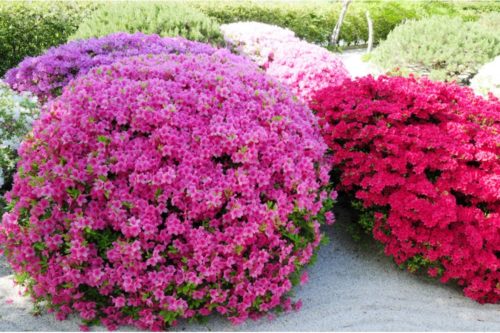
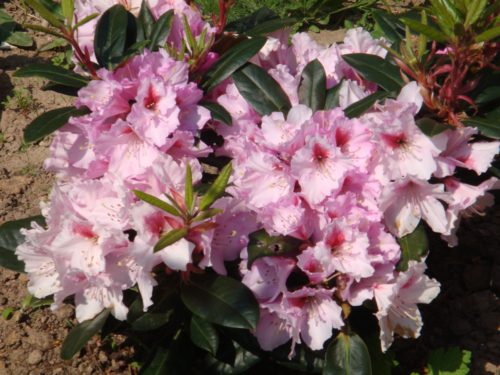

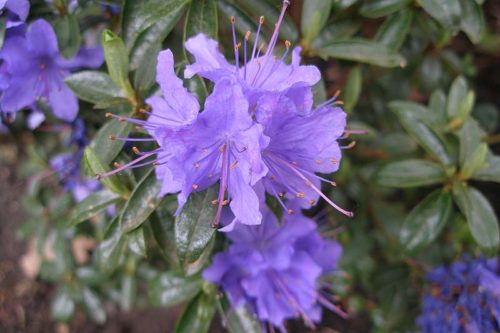
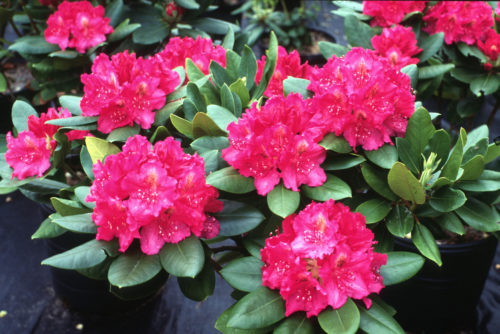












 Start a discussion ...
Start a discussion ...